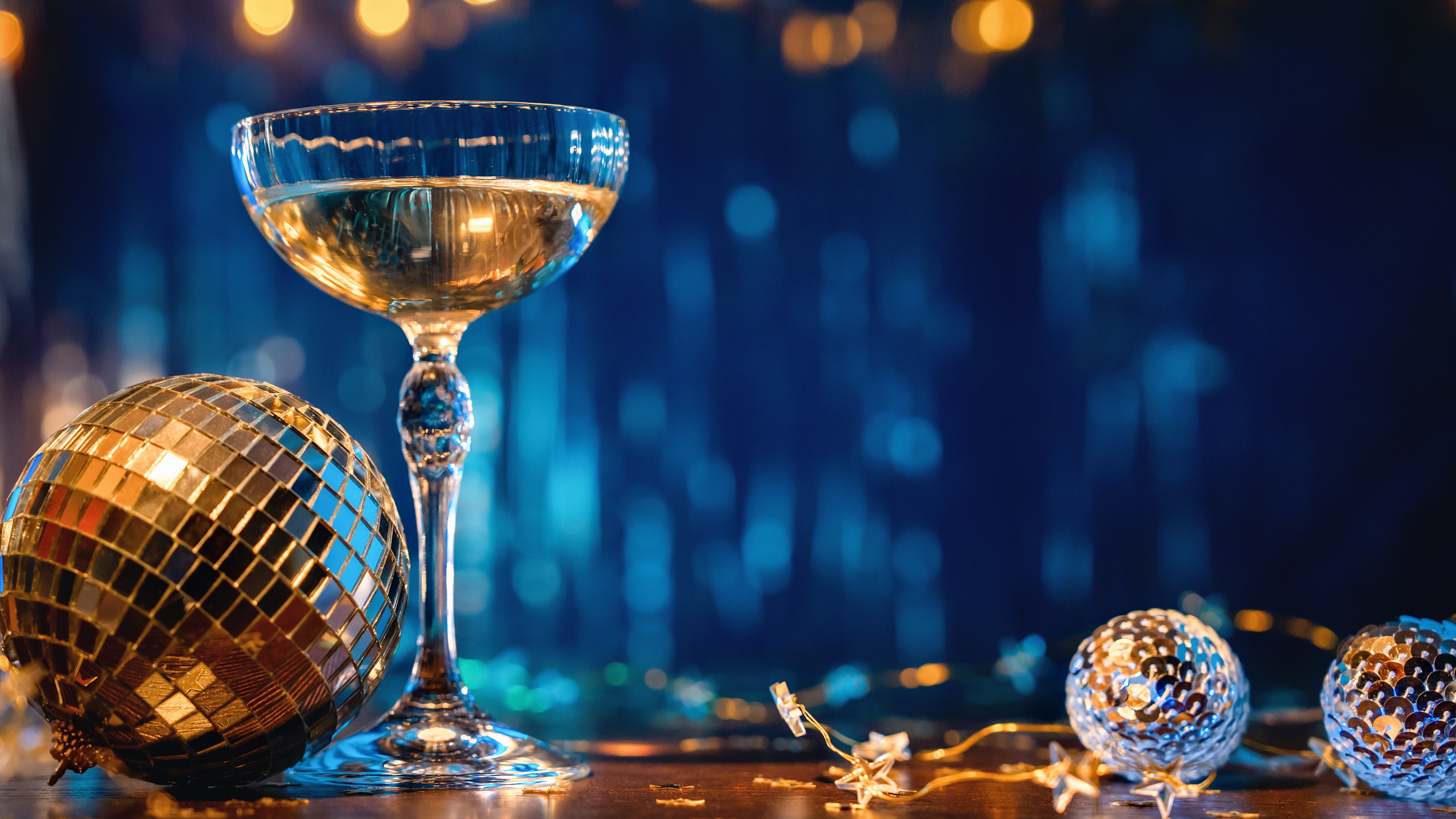The 9 Steps to Take to Make 2019 Your Best Financial Year Ever
Even the best savers could benefit from taking a cruise through this financial checklist. And if you're not the most disciplined budgeter on the block, then even better.


New Year’s is a day of renewal — the perfect time to create the kind of personal resolutions meant to improve your life. In other words, the perfect day to review your personal financial situation.
A yearly accounting of your finances should be a routine for everyone, but it isn’t for most.
If that describes you, start at the top of this list of nine steps to getting your financial house in order, and work your way through each item. If you’re already well organized, feel free to skip down the list until something catches your eye.
From just $107.88 $24.99 for Kiplinger Personal Finance
Become a smarter, better informed investor. Subscribe from just $107.88 $24.99, plus get up to 4 Special Issues

Sign up for Kiplinger’s Free Newsletters
Profit and prosper with the best of expert advice on investing, taxes, retirement, personal finance and more - straight to your e-mail.
Profit and prosper with the best of expert advice - straight to your e-mail.
1. Create a balance sheet.
This first step is simple: Just make a list of all your assets and liabilities. This process helps shore up a financial house because it shows where there might be structural weaknesses. More importantly, if you don’t have a balance sheet and something happens to you, the search for your assets will become a buried treasure hunt. What you use doesn’t matter — a spreadsheet or an app is fine. List each asset or liability as it’s titled, with account numbers, the interest rate charged and current beneficiary designations. Provide as much or as little detail as you want. Doing this at year’s end, every year, gives you the 10,000-foot view of your financial situation and provides a great sense of how you're growing, or not, financially.
2. Manage your debt; don’t just accept it.
There’s good debt and then there’s bad debt. Good debt may be a fixed-rate mortgage, both for the tax write-off and the security of knowing that you’re building equity. Bad debt could be student loans or credit cards with an interest rate significantly higher than your portfolio could ever make on an annual basis. In the new year, look to pay off the highest interest debt first, and find opportunities to consolidate.
Additionally, there’s both a practical and emotional side to paying down debt. For instance, if you receive a large bonus, have no credit card debt and have a low fixed-rate mortgage, it may make financial sense to invest the funds in your portfolio. However, some people may decide to pay down their mortgage in an effort to impact their balance sheet. In this case, the prospect of being debt free can feel more rewarding than the extra return that may come from investing.
Lastly, review your credit report. You can get a free copy from the three national credit bureaus annually, an especially wise move in this age of identity theft.
3. Construct a budget.
Find a tool that works for you, whether that’s an Excel spreadsheet or an app on your phone to create a budget and track your income and expenses. You may already know that your Pilates membership costs $200 a month, or that you barely watch TV and yet pay a ridiculous amount for cable, but seeing it written down will help you do the kind of trimming most overgrown household budgets could use.
4. Revisit your beneficiary designations.
Death is one thing most people work hard to avoid thinking about, but let’s face it: It’s something that will happen to all of us one day, and it’s important to be prepared. Ensure that you’ve elected both primary and contingent beneficiaries for all beneficiary-designated assets, including 401(k)s, pensions, annuities and insurance policies, and that they’re up to date. Also, consider Payable on Death (POD) or Transfer on Death (TOD) accounts for individually named bank or brokerage accounts. Failure to do so could cause assets to mistakenly go to an ex-spouse instead of children. Worse yet, without designations, your assets will head to probate court for sorting, which can be expensive and time-consuming at a moment when heirs generally want their deceased loved one’s financial affairs wrapped up quickly.
5. Review your insurance coverage annually.
Don’t just set it and forget it — re-evaluate your needs, because they can and do change from year to year. This applies to all of your insurance needs: homeowners, auto, life, disability, umbrella, etc. Are you paying the high cost for a whole life insurance policy when all you really need is a term policy? Do you have an umbrella policy that offers liability protection above the limits offered under your homeowners and/or auto policy in the event that you’re sued because your normally sweet dog, Duke, bit the mailman? A periodic review of your insurance policies is a prudent exercise that can pay off big when or if the unforeseen happens.
6. Think about your estate plan.
If you have children or travel a lot, this is, in my opinion, mandatory. Who will be your kids' guardian if you and your partner pass prematurely? Who will oversee the funds and how they’re distributed? Do you have a health care power of attorney or financial power of attorney? Have you recently moved to a new state where laws might be different?
Estate planning is more than just having a will. If you opt not to inform your family about your estate plan while living, make sure they know where to find your financial documents in the event of your passing so that they can easily settle your estate and move forward without additional stress or loss of assets.
7. Build an emergency reserve.
Bad stuff happens. Do you have three to six months of cash reserves to afford your lifestyle that can be drawn upon within 24 hours? You don’t want to rely on divesting illiquid assets, liquidating investment or retirement accounts or being forced to take out additional loans. If you are starting from scratch to build your emergency reserve, you should bump this item up on your to-do list.
8. Save as much as you can.
Commit to maximizing your savings by using employer-sponsored retirement plans such as 401(k)s, 403(b)s or setting up a monthly deposit into your IRA and revisiting your elections or contribution amounts every year to make sure they align with your goals. Do you have college-bound kids? Use a 529 plan, shifting and rebalancing between it and traditional savings depending on how your life, retirement plan and the ambitions of your children change as you both grow older. And most importantly, make these deductions automatic — if the money never touches your bank account, psychologically it won’t feel as if you’ve lost anything.
9. Set goals.
Many people use journals, because setting pen to paper can help you document and achieve your long-term and short-term financial goals. You can be as obsessive and detailed as you want, provided it's useful. Writing it down doesn’t mean the job is done, but it makes it a whole lot more likely.
Finally, if you’ve reached the end of this list and still have questions, call a knowledgeable friend or family member or hire a trusted financial adviser. If you skipped it entirely, do the same. The new year is a perfect time to reassess what’s going well and what needs to improve in your financial life. And if you’d prefer to have someone walk you through each one of these steps, there’s no harm in asking for help.
Profit and prosper with the best of Kiplinger's advice on investing, taxes, retirement, personal finance and much more. Delivered daily. Enter your email in the box and click Sign Me Up.

Jaime Eckels, CFP, has been helping clients achieve their financial goals for 20 years and specializes in developing savings behaviors, implementing debt-reduction strategies, analyzing client cash flows, defining investment policy, determining portfolio allocations, minimizing income taxes and maximizing client balance sheets.
-
 10 Cheapest Places to Live in Washington
10 Cheapest Places to Live in WashingtonProperty Tax Is Washington your go-to ski destination? These counties combine no income tax with the lowest property tax bills in the state.
-
 Healthy to 100: Secrets from Countries Where Retirees Age Best
Healthy to 100: Secrets from Countries Where Retirees Age BestLongevity is a team sport, according to author Ken Stern. Here's the secret sauce for living long, healthy lives from countries like Italy and Japan.
-
 My First $1 Million: Semiretired CPA, 68, San Francisco
My First $1 Million: Semiretired CPA, 68, San FranciscoEver wonder how someone who's made a million dollars or more did it? Kiplinger's My First $1 Million series uncovers the answers.
-
 6 Overlooked Areas That Can Make or Break Your Retirement, From a Retirement Adviser
6 Overlooked Areas That Can Make or Break Your Retirement, From a Retirement AdviserIf you're heading into retirement with scattered and uncertain plans, distilling them into these six areas can ensure you thrive in later life.
-
 I'm a Wealth Adviser: These Are the 7 Risks Your Retirement Plan Should Address
I'm a Wealth Adviser: These Are the 7 Risks Your Retirement Plan Should AddressYour retirement needs to be able to withstand several major threats, including inflation, longevity, long-term care costs, market swings and more.
-
 High-Net-Worth Retirees: Don't Overlook These Benefits of Social Security
High-Net-Worth Retirees: Don't Overlook These Benefits of Social SecurityWealthy retirees often overlook Social Security. But timed properly, it can drive tax efficiency, keep Medicare costs in check and strengthen your legacy.
-
 8 Practical Ways to Declutter Your Life in 2026: A Retirement 'Non-Resolution' Checklist
8 Practical Ways to Declutter Your Life in 2026: A Retirement 'Non-Resolution' ChecklistHere's how to stop wasting your energy on things that don't enhance your new chapter and focus on the things that do.
-
 To Retire Rich, Stop Chasing Huge Returns and Do This Instead, Courtesy of a Financial Planner
To Retire Rich, Stop Chasing Huge Returns and Do This Instead, Courtesy of a Financial PlannerSaving a large percentage of your income, minimizing taxes and keeping spending in check can offer a more realistic path to retiring rich.
-
 New Year, New Retirement Rules: Here's How You Can Keep Up as the Landscape Changes
New Year, New Retirement Rules: Here's How You Can Keep Up as the Landscape ChangesFor a successful modern retirement, prepare for a longer life, manage high health care costs and prioritize your social life and purpose.
-
 7 Creative Ways to Spend Less and Save More In Retirement, Courtesy of a Financial Pro
7 Creative Ways to Spend Less and Save More In Retirement, Courtesy of a Financial ProWorried you won't have enough money later in life? Try redesigning your vision of retirement, and you may find your savings go further than you thought.
-
 I'm an Annuities Pro: This Is How You Can Cover the Income Gap While Your Social Security Benefits Grow
I'm an Annuities Pro: This Is How You Can Cover the Income Gap While Your Social Security Benefits GrowTaking Social Security later results in higher future income, but that can create an income gap. Annuities can boost income until you file for benefits.